
Discover how skin signals can help diagnose serious diseases accurately, leading to timely treatment and improved outcomes.
Serious diseases can manifest through skin indicators, extending beyond acne. Neglecting skin issues for appearance’s sake can worsen the situation. Numerous skin signals exist as red flags for underlying serious diseases.
*Please, be aware that we DO NOT intend to provide medical advice. Any content in our materials is purely for informational purposes. We strongly suggest seeking healthcare professionals’ guidance.
1. Dark spots

The sudden appearance of dark spots on your skin may indicate adrenal insufficiency (Addison’s disease), but it’s not always the case. Other symptoms include muscle/joint pain, loss of appetite, low blood pressure, and sugar levels. If you notice these symptoms, contact your doctor promptly.
2. Discoloration
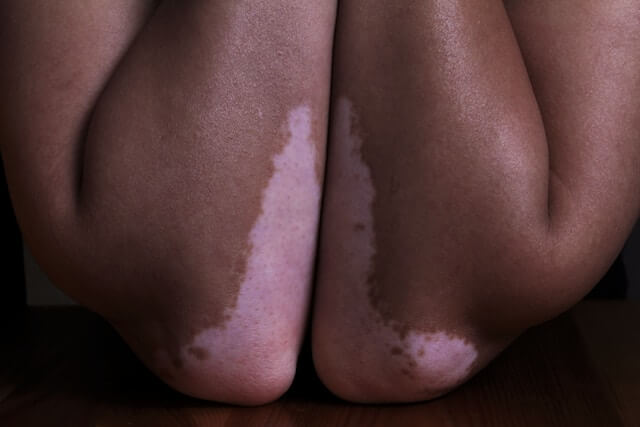
Did you ever notice white patches on your skin? It could be vitiligo, a condition where melanocytes stop producing pigment. If you experience this, consult an endocrinologist or dermatologist for diagnosis and treatment.
3. Rashes
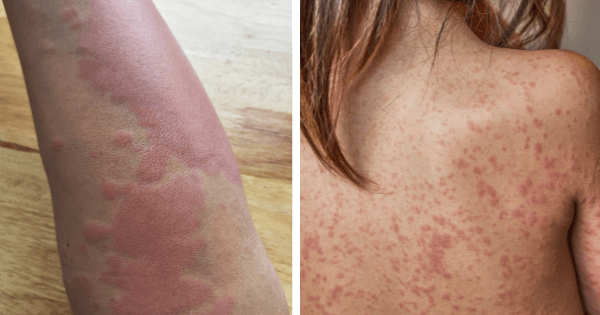
It is commonly understood that rashes indicate underlying issues. Whether caused by food, medication, or contagious diseases like chickenpox, persistent and severe rashes should prompt a visit to the doctor. Certain conditions such as Stevens-Johnson Syndrome or Lyell’s syndrome can have serious consequences. Immediate medical attention is necessary if an adult develops chickenpox.
4. Edemas
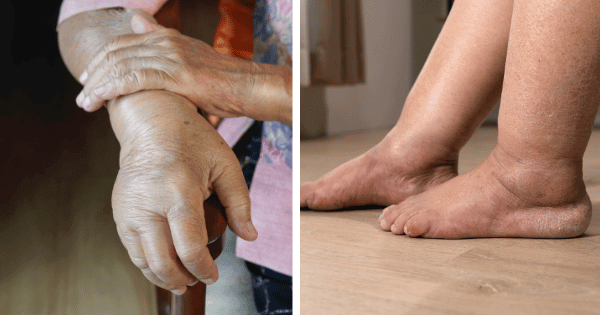
If you experience daily edemas, it’s advisable to consult an endocrinologist as it could indicate hypothyroidism. This condition, characterized by insufficient hormone production, may also cause dry skin, hair loss, weight gain, and more. Please seek medical attention if you have these symptoms.
5. Moles
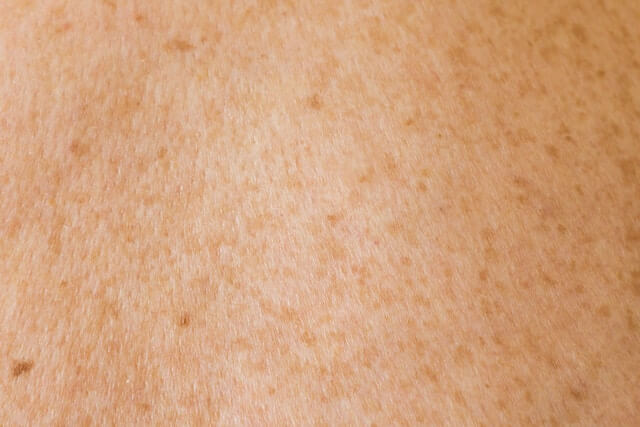
New moles can appear on our bodies for different reasons, including heredity. While most moles are harmless, it’s crucial to seek medical attention if you experience rapid growth, pain, or noticeable changes in color and size.
6. Acne
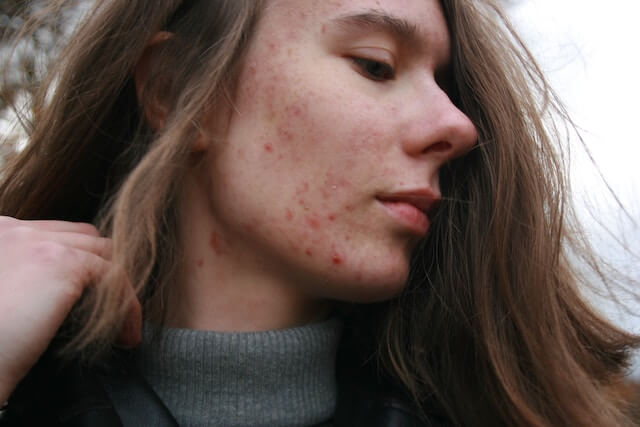
Acne is a common condition caused by factors like excess skin oil, hormonal imbalances, or digestion issues. To tackle it effectively, adopt a suitable skincare routine and consult a doctor for personalized advice.
7. Flaking
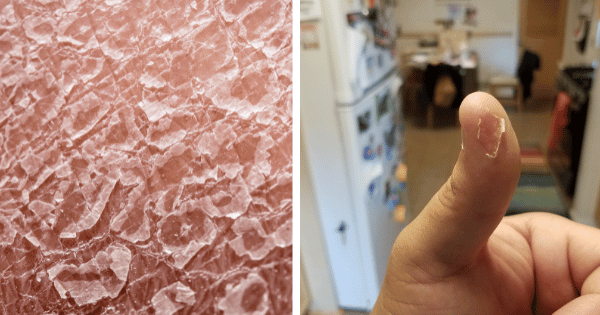
Flaking can occur due to various factors such as vitamin deficiencies, hormone imbalances, allergic reactions, and certain diseases. When accompanied by severe symptoms, it can indicate the presence of a significant underlying illness.
8. Excessive sweating

Experiencing excessive sweating may indicate Graves’ disease, an autoimmune condition impacting the thyroid. This can lead to thinner skin and persistent itching. If you suspect these symptoms, it is crucial to seek medical attention promptly.
Did you know these serious diseases can be diagnosed via skin indicators? Share your thoughts in the comments below!
Signs on skin that may be indicative of serious diseases
01/5What is our Epidermis trying to tell us?
What is our Epidermis trying to tell us?

Did you know that there are important hints about your general health hidden in every square inch of your skin? Your skin is like a map; its texture and colour can point you in the direction of possible health issues. Here we will get into the mysteries of skin, to see what hidden messages it might be attempting to tell. Maintaining general well-being may depend on the ability to remain vigilant and pay attention to what our skin is telling us.
02/5Redness: A warning sign

One of the most noticeable signs on the skin is redness, which can indicate various health issues. It is often warned that patterns and distributions of redness could signal conditions such as rosacea, skin irritation, or allergic reactions. Additionally, tiny red or purple dots that fail to fade when pressed might suggest a deficiency in essential vitamins or even more serious health issues.
Read also: Prostrate Cancer why some men are at risk more than others
03/5Discolouration: What the colours mean

The discolouration is another significant indicator of health problems, with each colour revealing specific underlying causes. Redness typically points to inflammation, while brown indicates pigmentation changes and blue may signal vascular issues. Moreover, spotting pink and yellow patches on the shins, known as Necrobiosis lipoidica, could be a potential indicator of diabetes. However, these patches could also signify thyroid issues or inflammatory diseases like Crohn’s disease and rheumatoid arthritis, highlighting the importance of thorough health evaluation.
04/5Skin thickness: A telltale sign of Diabetes

Skin thickness or enlargement, particularly on the fingers, hands, and feet, could serve as a red flag for diabetes. This thickening is often accompanied by decreased sensation, further emphasising the importance of monitoring skin changes for early detection of health issues.
Read also: This is the best time to drink milk as per experts
05/5Listening to your skin for better health

Our skin is more than just a protective barrier – it’s a reflection of your internal health. By paying attention to subtle changes in skin texture and colour, individuals can potentially identify underlying health conditions early on. Consulting with a dermatologist or healthcare professional is essential for the proper diagnosis and management of any concerning skin symptoms.
The 12 Best Foods for Healthy Skin
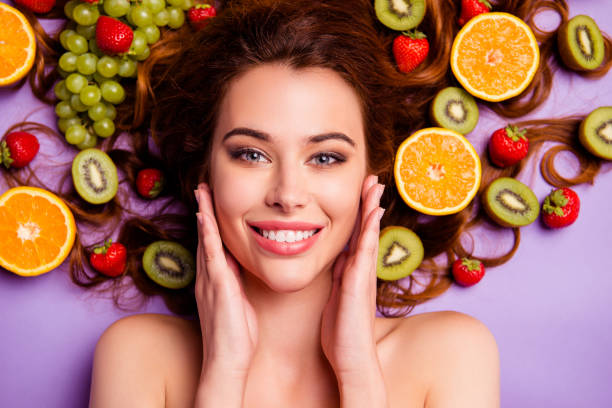
Nutrition is important for health. An unhealthy diet can damage your metabolism, cause weight gain, and even damage organs, such as your heart and liver.
But what you eat also affects another organ — your skin.
As scientists learn more about diet and the body, it’s increasingly clear that what you eat can significantly affect the health and aging of your skin.
This article takes a look at 12 of the best foods for keeping your skin healthy.
1. Fatty fish
Fatty fish, such as salmon, mackerel, and herring, are excellent foods for healthy skin. They’re rich sources of omega-3 fatty acids, which are important for maintaining skin health
Omega-3 fatty acids are necessary to help keep skin thick, supple, and moisturized. In fact, an omega-3 fatty acid deficiency can cause dry skin
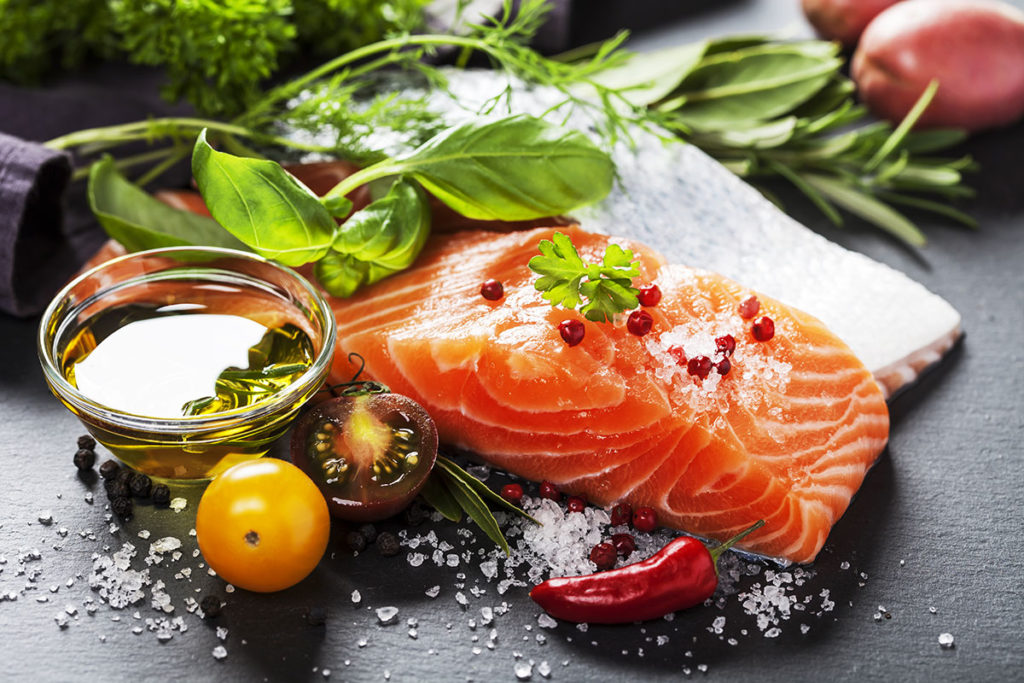
The omega-3 fats in fish reduce inflammation, which can cause redness and acne. They can even make your skin less sensitive to the sun’s harmful UV rays
Some studies show that fish oil supplements may help fight inflammatory and autoimmune conditions affecting your skin, such as psoriasis and lupus
Fatty fish is also a source of vitamin E, one of the most important antioxidants for your skin.
Getting enough vitamin E is essential for helping protect your skin against damage from free radicals and inflammation
This type of seafood is also a source of high quality protein, which is needed for maintaining the strength and integrity of your skin
Lastly, fish provides zinc — a mineral vital for regulating the following:
- inflammation
- overall skin health
- the production of new skin cells
Zinc deficiency can lead to skin inflammation, lesions, and delayed wound healing
2. Avocados
Avocados are high in healthy fats. These fats benefit many functions in your body, including the health of your skin
Getting enough of these fats is essential to help keep skin flexible and moisturized.

One study involving over 700 women found that a high intake of total fat — specifically the types of healthy fats found in avocados — was associated with more supple, springy skin
Preliminary evidence also shows that avocados contain compounds that may help protect your skin from sun damage. UV damage to your skin can cause wrinkles and other signs of aging
Avocados are also a good source of vitamin E, which is an important antioxidant that helps protect your skin from oxidative damage. Most Americans don’t get enough vitamin E through their diet.
Interestingly, vitamin E seems to be more effective when combined with vitamin C
Vitamin C is also essential for healthy skin. Your skin needs it to create collagen, which is the main structural protein that keeps your skin strong and healthy
Vitamin C deficiency is rare these days, but common symptoms include dry, rough, and scaly skin that tends to bruise easily.
Vitamin C is also an antioxidant that helps protect your skin from oxidative damage caused by the sun and the environment, which can lead to signs of aging
A 100-gram serving, or about 1/2 an avocado, provides 14% of the Daily Value (DV) for vitamin E and 11% of the DV for vitamin C
3. Walnuts

Walnuts have many characteristics that make them an excellent food for healthy skin.
They’re a good source of essential fatty acids, which are fats that your body cannot make itself.
In fact, they’re richer than most other nuts in both omega-3 and omega-6 fatty acids
A diet too high in omega-6 fats may promote inflammation, including inflammatory conditions of your skin like psoriasis.
On the other hand, omega-3 fats reduce inflammation in your body — including in your skin
While omega-6 fatty acids are plentiful in the Western diet, sources of omega-3 fatty acids are rare.
Because walnuts contain a good ratio of these fatty acids, they may help fight the potential inflammatory response to excessive omega-6.
What’s more, walnuts contain other nutrients that your skin needs to function properly and stay healthy.
One ounce (28 grams) of walnuts contains 8% of the DV for zinc.
Zinc is essential for your skin to function properly as a barrier. It’s also necessary for wound healing and combating both bacteria and inflammation
Walnuts also provide small amounts of the antioxidants vitamin E and selenium, in addition to 4–5 grams of protein per ounce (28 grams)
4. Sunflower seeds
In general, nuts and seeds are good sources of skin-boosting nutrients.
Sunflower seeds are an excellent example.
One ounce (28 grams) of sunflower seeds packs 49% of the DV for vitamin E, 41% of the DV for selenium, 14% of the DV for zinc, and 5.5 grams of protein
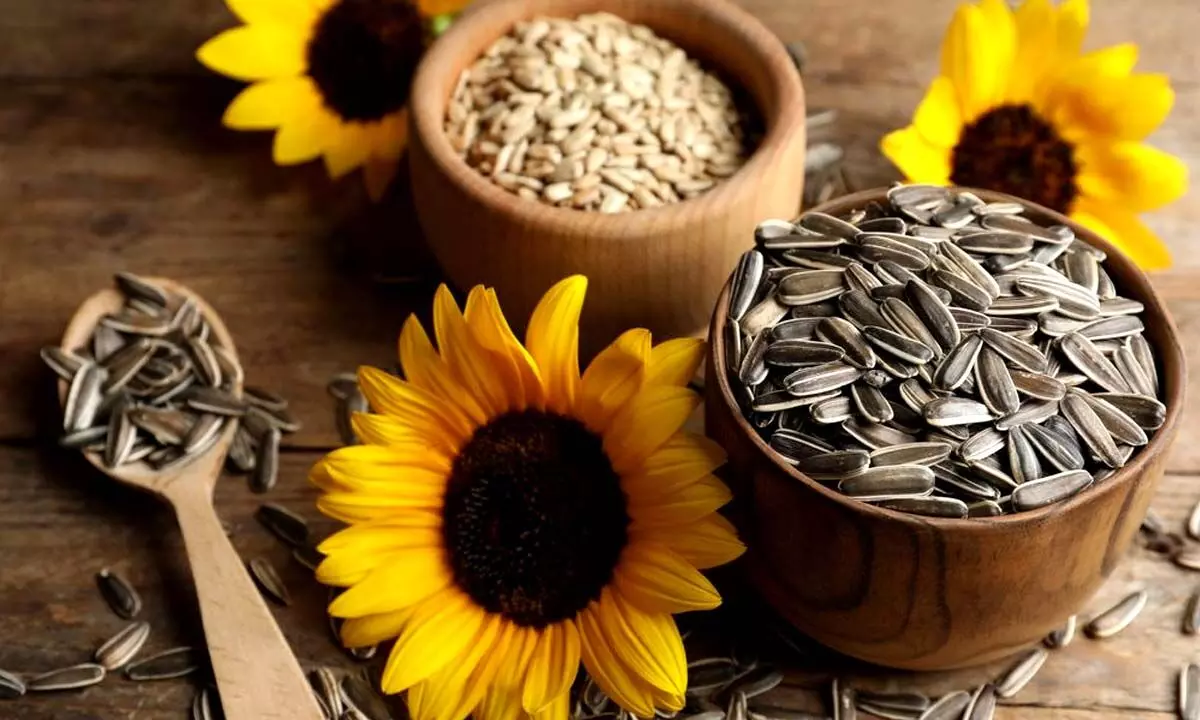
5. Sweet potatoes
Beta carotene is a nutrient found in plants.
It functions as provitamin A, which means it can be converted into vitamin A in your body.
Beta carotene is found in oranges and vegetables such as carrots, spinach, and sweet potatoes
Sweet potatoes are an excellent source — one 1/2-cup (100-gram) serving of baked sweet potato contains enough beta carotene to provide more than six times the DV of vitamin A
Carotenoids like beta carotene help keep your skin healthy by acting as a natural sunblock.
When consumed, this antioxidant is incorporated into your skin and helps protect your skin cells from sun exposure. This may help prevent sunburn, cell death, and dry, wrinkled skin.
Interestingly, high amounts of beta carotene may also add a warm, orange color to your skin, contributing to an overall healthier appearance
6. Red or yellow bell peppers
Like sweet potatoes, bell peppers are an excellent source of beta carotene, which your body converts into vitamin A.
One cup (149 grams) of chopped red bell pepper contains the equivalent of 156% of the DV for vitamin A
They’re also one of the best sources of vitamin C. This vitamin is necessary for creating the protein collagen, which keeps skin firm and strong.
A single cup (149 grams) of bell pepper provides an impressive 211% of the DV for vitamin C
A large observational study involving women linked eating plenty of vitamin C to a reduced risk of wrinkled and dry skin with age

7. Broccoli
Broccoli is full of many vitamins and minerals important for skin health, including zinc, vitamin A, and vitamin C
It also contains lutein, a carotenoid that works like beta carotene. Lutein helps protect your skin from oxidative damage, which can cause your skin to become dry and wrinkled.

But broccoli florets also pack a special compound called sulforaphane, which boasts some impressive potential benefits. It may even have anti-cancer effects, including on some types of skin cancer
Sulforaphane is likewise a powerful protective agent against sun damage. It works in two ways: neutralizing harmful free radicals and switching on other protective systems in your body
In laboratory tests, sulforaphane reduced the number of skin cells UV light killed by as much as 29%, with protection lasting up to 48 hours.
Evidence suggests sulforaphane may also help maintain collagen levels in your skin
8. Tomatoes
Tomatoes are a great source of vitamin C and contain all of the major carotenoids, including lycopene.
Beta carotene, lutein, and lycopene have been shown to protect your skin against damage from the sun. They may also help prevent wrinkling
Because tomatoes are rich in carotenoids, they’re an excellent food for maintaining healthy skin.
Consider pairing carotenoid-rich foods like tomatoes with a source of fat, such as cheese or olive oil. Fat increases your absorption of carotenoids
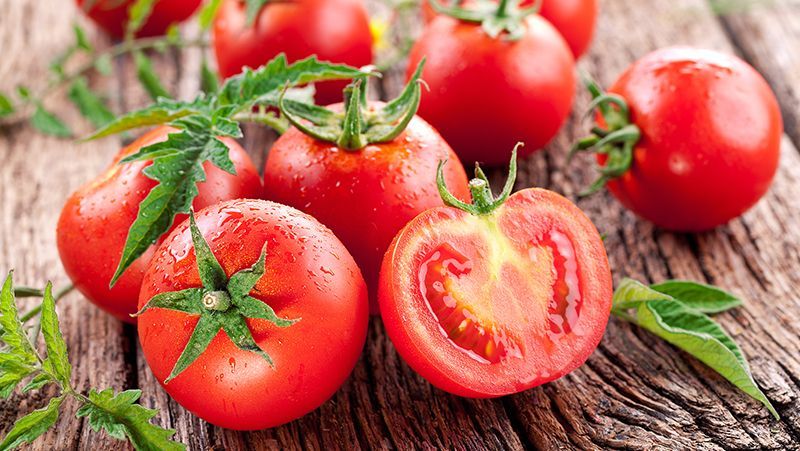
9. Soy
Soy contains isoflavones, a category of plant compounds that can either mimic or block estrogen in your body.
Isoflavones may benefit several parts of your body, including your skin.
One small study involving middle-aged women found that eating soy isoflavones every day for 8–12 weeks reduced fine wrinkles and improved skin elasticity
In postmenopausal women, soy may also improve skin dryness and increase collagen, which helps keep your skin smooth and strong
These isoflavones not only help to protect the cells inside your body from damage but also your skin from UV radiation — which may reduce the risk of some skin cancers
10. Dark chocolate
If you need one more reason to eat chocolate, here it is: The effects of cocoa on your skin are pretty phenomenal.
After 6–12 weeks of consuming a cocoa powder high in antioxidants each day, participants in one study experienced thicker, more hydrated skin.
Their skin was also less rough and scaly, less sensitive to sunburn, and had better blood flow — which brings more nutrients to your skin
Another study found that eating 20 grams of high-antioxidant dark chocolate per day could allow your skin to withstand over twice as much UV radiation before burning, compared with eating low-antioxidant chocolate
Several other studies have observed similar results, including improvements in the appearance of wrinkles. However, keep in mind that at least one study didn’t find significant effects
Make sure to choose dark chocolate with at least 70% cocoa to maximize the benefits and keep added sugar to a minimum.
11. Green tea
Green tea may help protect your skin from damage and aging.
The powerful compounds found in green tea are called catechins and work to improve the health of your skin in several ways.
Like several other antioxidant-containing foods, green tea can help protect your skin against sun damage
One 12-week study involving 60 women found that drinking green tea daily could reduce redness from sun exposure by up to 25%.
Green tea also improved the moisture, roughness, thickness, and elasticity of their skin
While green tea is a great choice for healthy skin, you may want to avoid drinking your tea with milk, as there’s evidence that milk could reduce the effect of green tea’s antioxidants ().
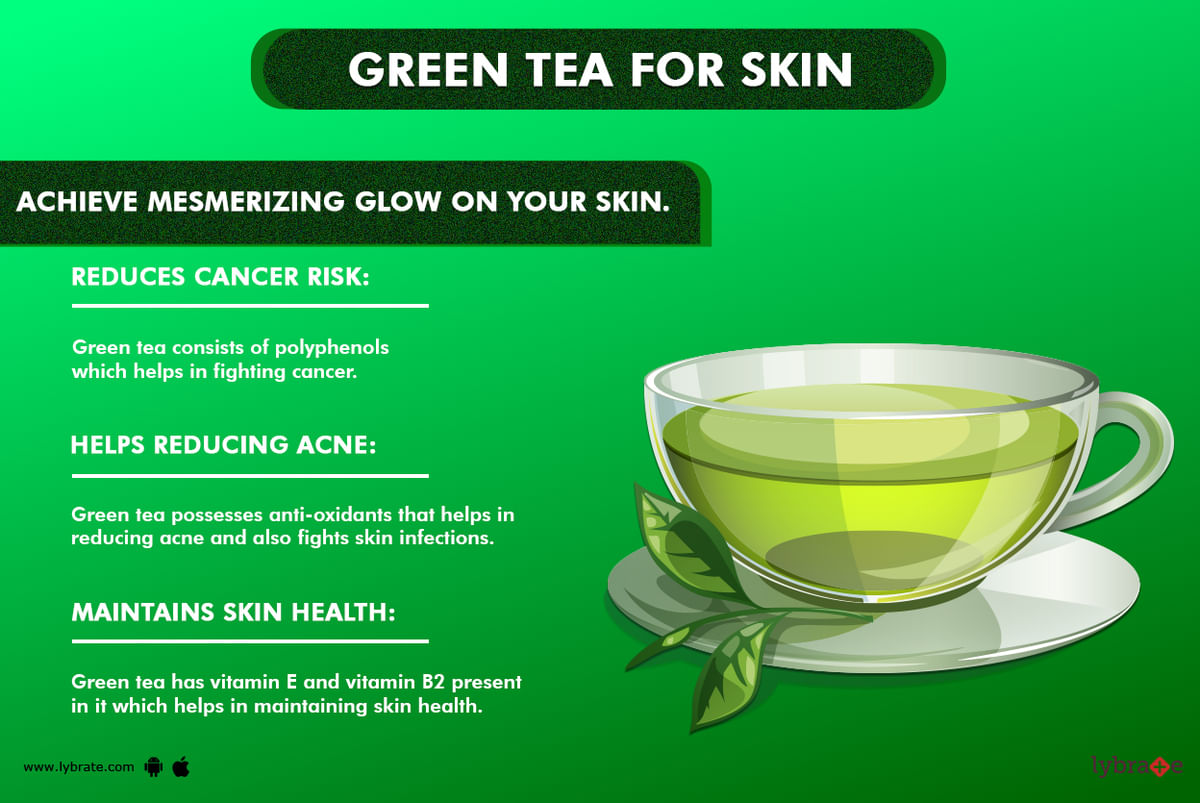
12. Red grapes
Red grapes are famous for containing resveratrol, a compound that comes from the skin of red grapes.
Resveratrol is credited with a wide range of health benefits, among them is reducing the effects of aging.
Test-tube studies suggest it may also help slow the production of harmful free radicals, which damage skin cells and cause signs of aging
This beneficial compound is also found in red wine. Unfortunately, there’s not much evidence that the amount of resveratrol you get from a glass of red wine is enough to affect your skin.
And since red wine is an alcoholic beverage, there are negative effects to drinking it in excess.
It’s not recommended to start drinking red wine just because of its potential health benefits. Instead, you should increase your intake of red grapes and berries.
The bottom line
What you eat can significantly affect your skin health.
Make sure you’re getting enough essential nutrients to protect your skin. The foods on this list are great options to keep your skin healthy, strong, and attractive.




:max_bytes(150000):strip_icc():focal(749x0:751x2)/James-Cashen-ER-Quarantine-Room-2025-0-091625-1d28d764a1d34a3586590ff58cdde6b4.jpg?w=1200&resize=1200,0&ssl=1)



:max_bytes(150000):strip_icc():focal(749x0:751x2):format(webp)/donald-trump-jimmy-carter-tout-100224-c6ec10ab9813473a8c708bf8844ae287.jpg?w=1200&resize=1200,0&ssl=1)







:max_bytes(150000):strip_icc():focal(749x0:751x2):format(webp)/Stray-Dog-Shot-4-Times-010225-1-4447be753b8e48d8a4371bcb8ac05cce.jpg?w=1200&resize=1200,0&ssl=1)
:max_bytes(150000):strip_icc():focal(749x0:751x2):format(webp)/firefighters-recue-dog-that-fell-in-icy-pond-1-010226-2239db48a5894b2ca6ea50c805da048f.jpg?w=1200&resize=1200,0&ssl=1)













:max_bytes(150000):strip_icc():focal(749x0:751x2)/rob-reiner-michelle-121525-fa6b3f711074498bbd85064cd8087ab6.jpg?w=1200&resize=1200,0&ssl=1)








:max_bytes(150000):strip_icc():focal(587x7:589x9)/hilary-duff-1-8885477a9c0e468782157a05b32cb221.jpg?w=1200&resize=1200,0&ssl=1)
:max_bytes(150000):strip_icc():focal(700x500:702x502)/Mickey-Rourke-TEATRO-Even-Summer-White-Affair-041425-01-dda588030a524ffb88242f46d853a6da.jpg?w=1200&resize=1200,0&ssl=1)
